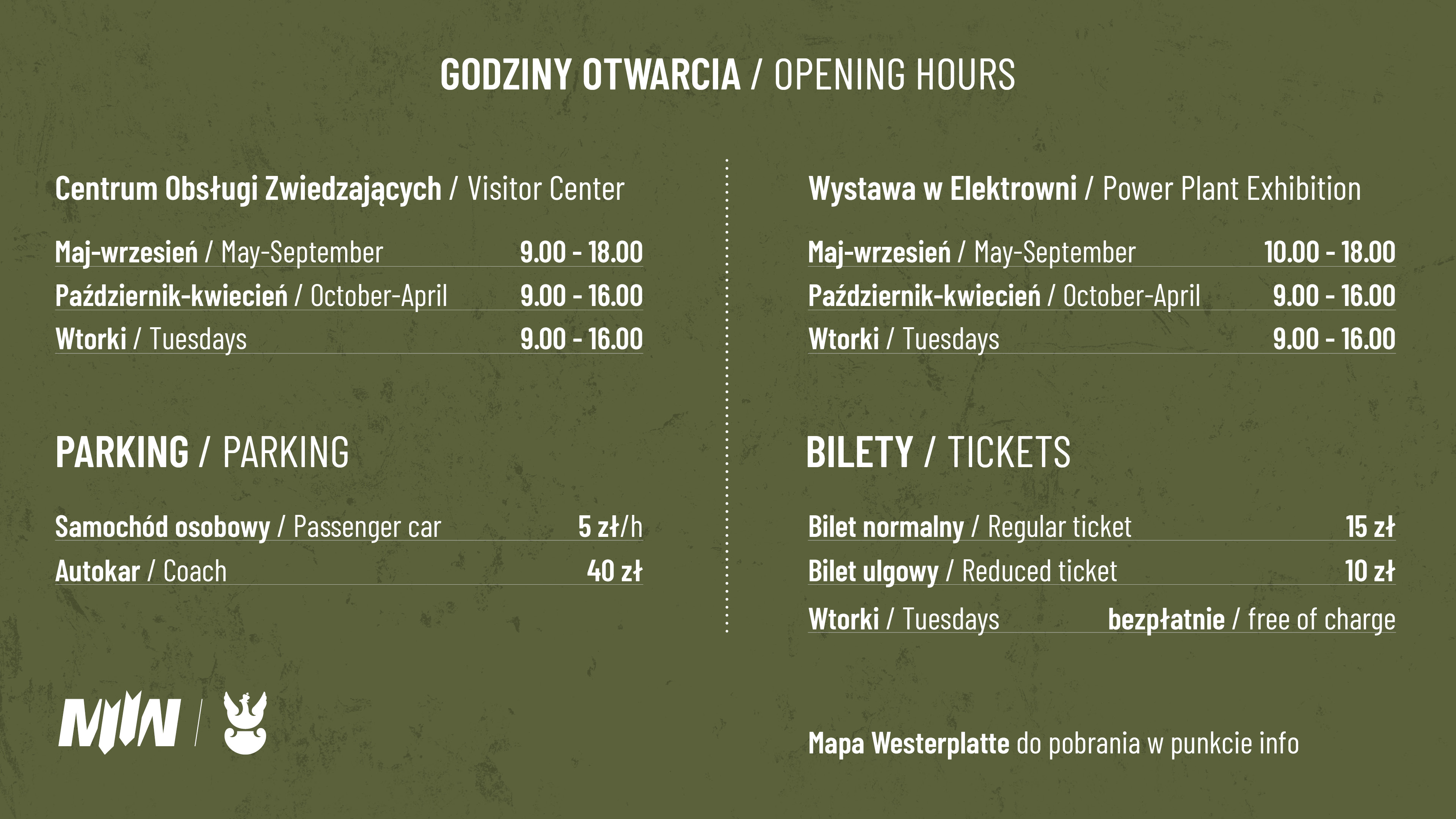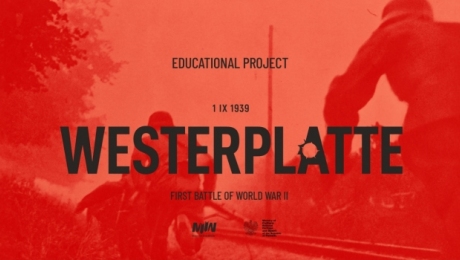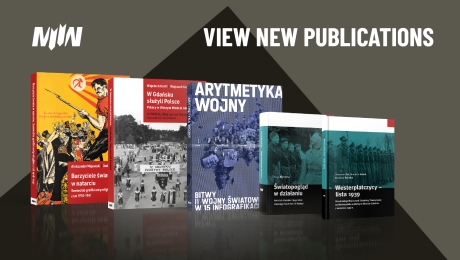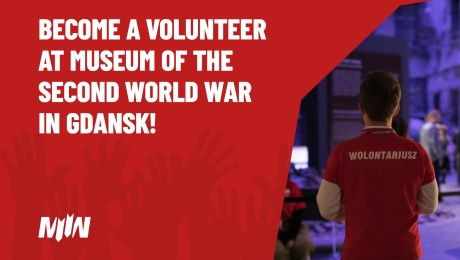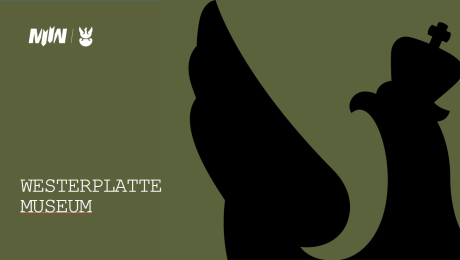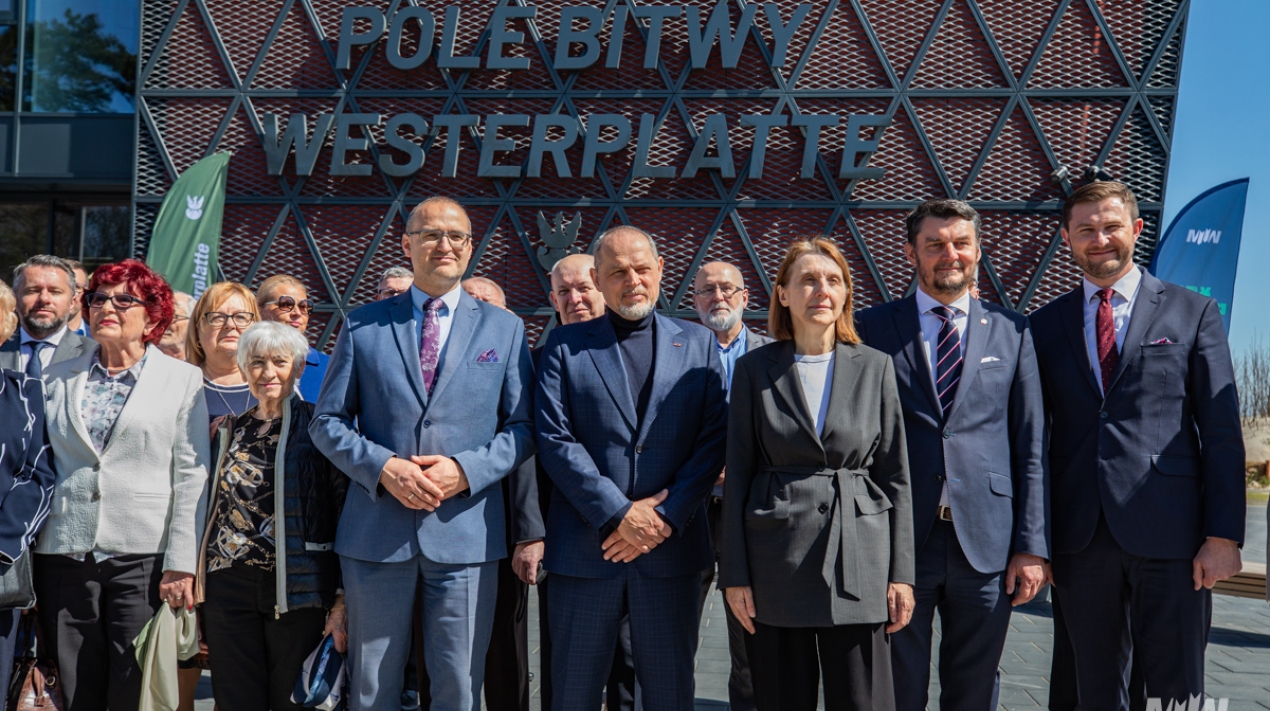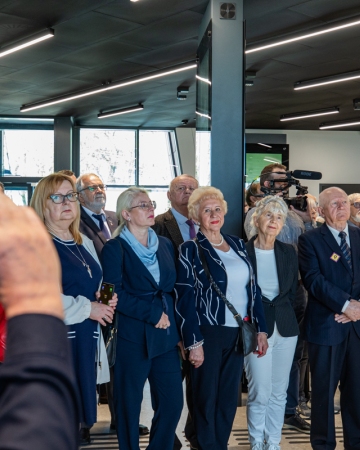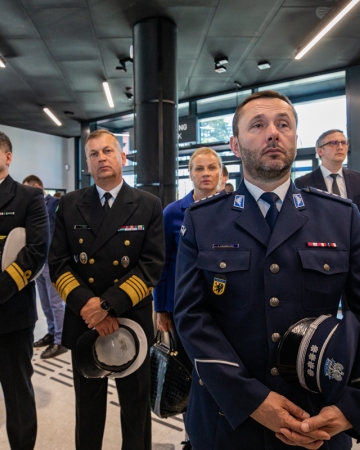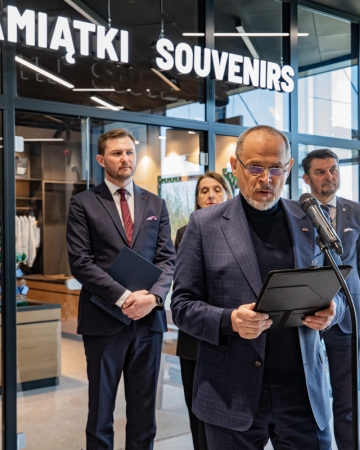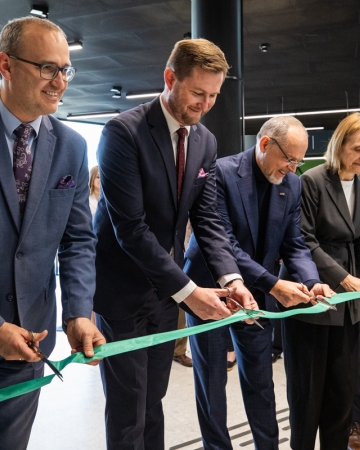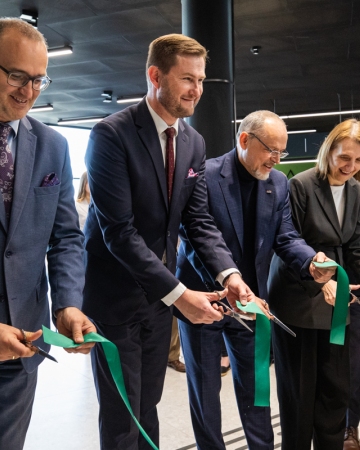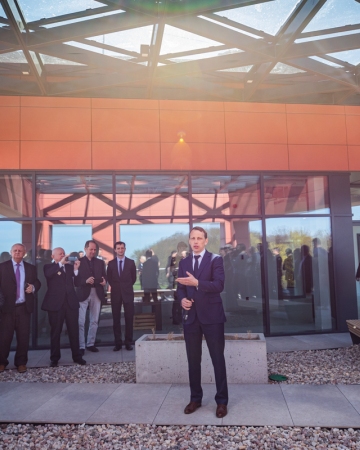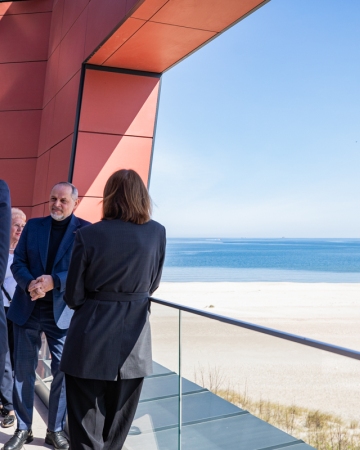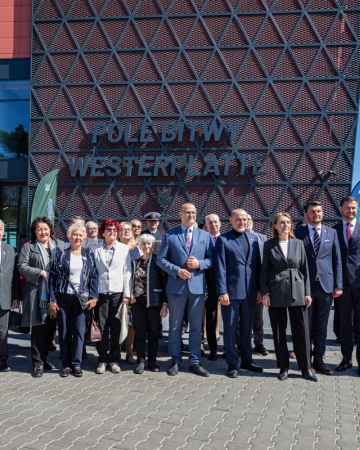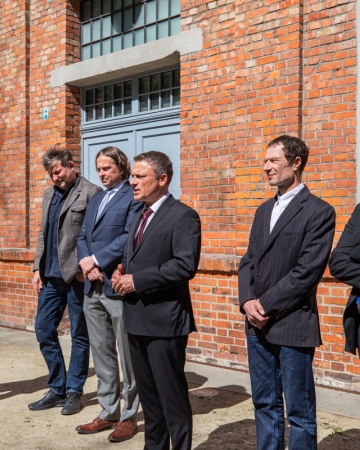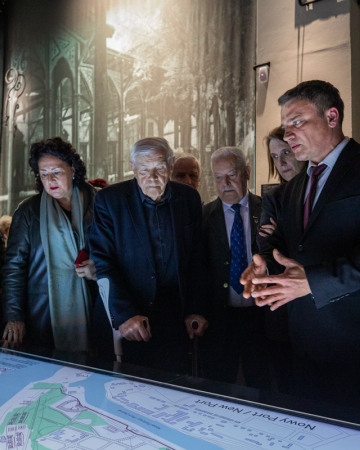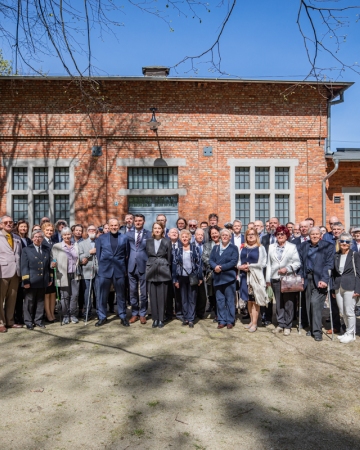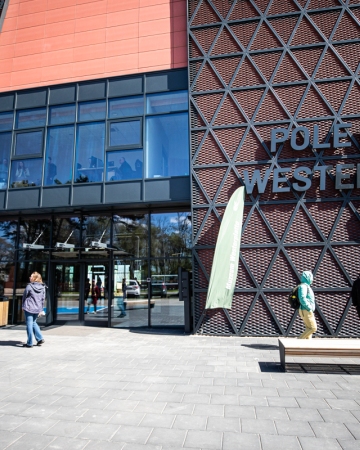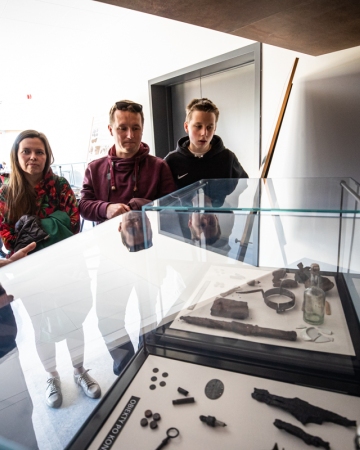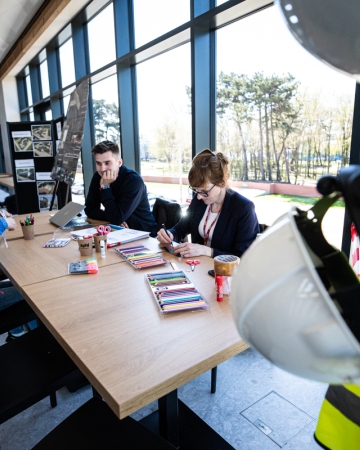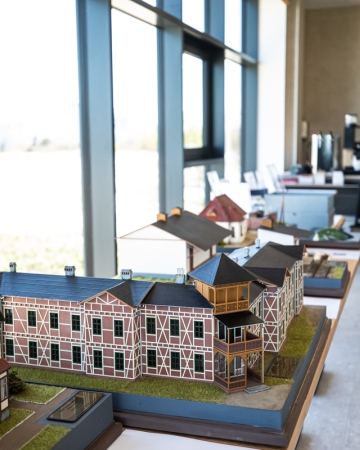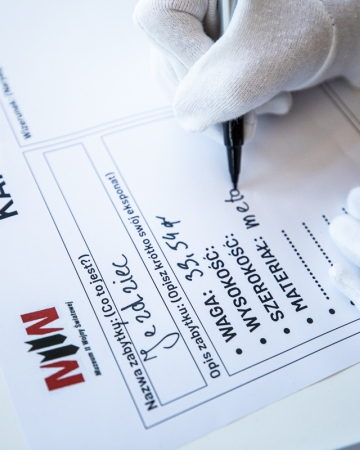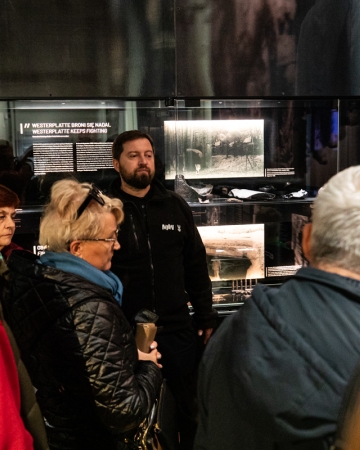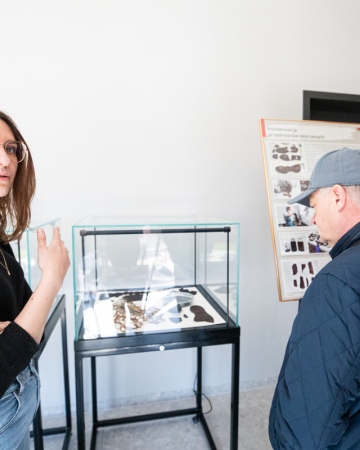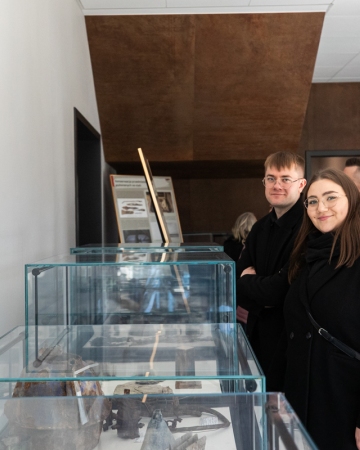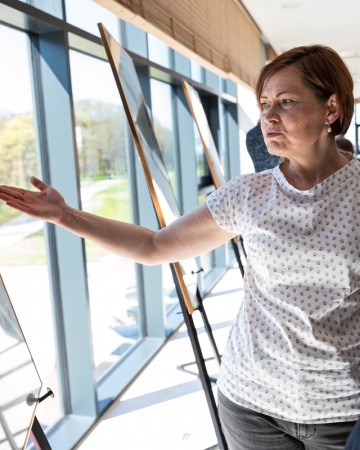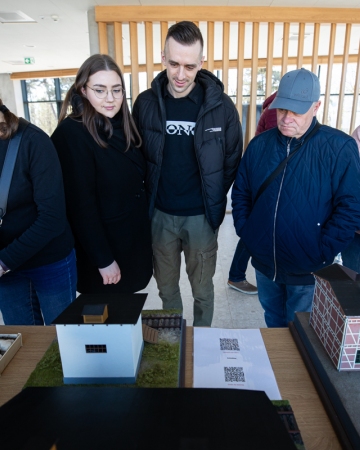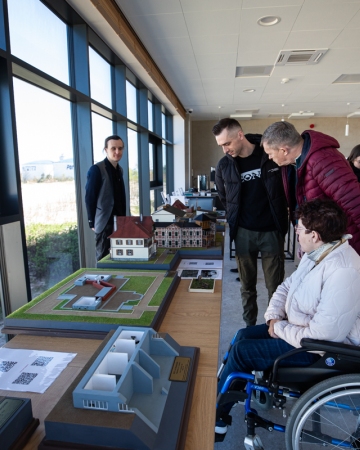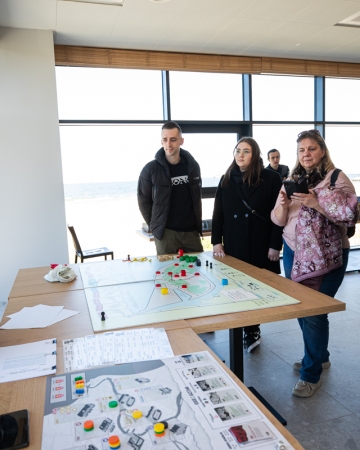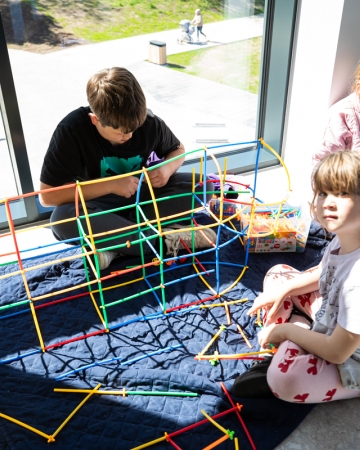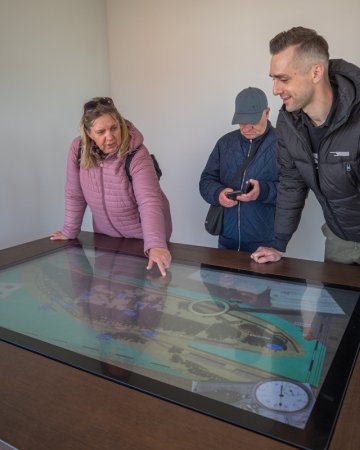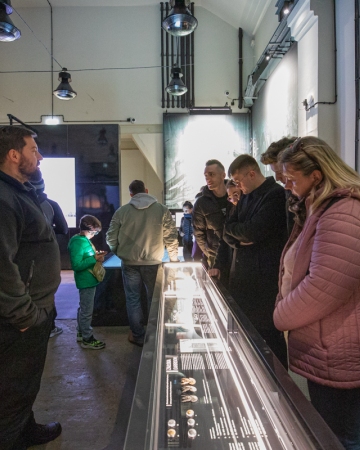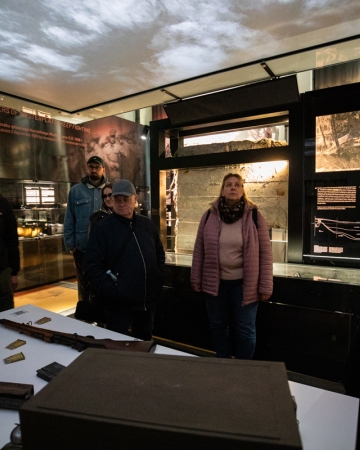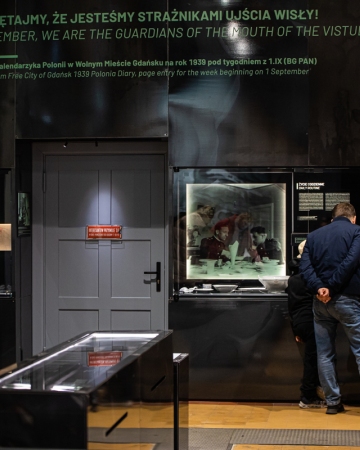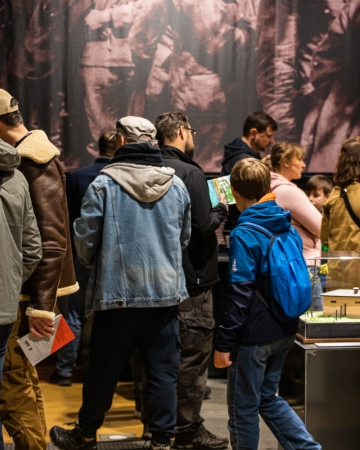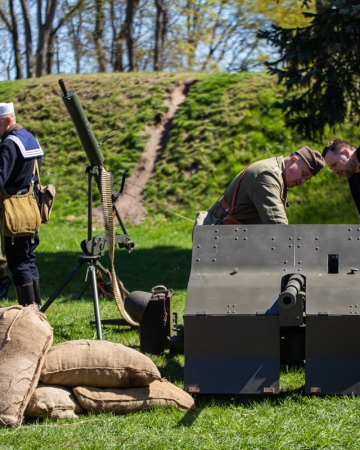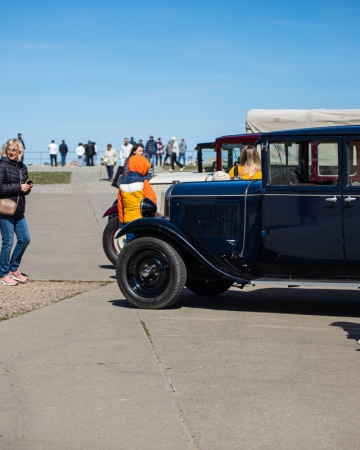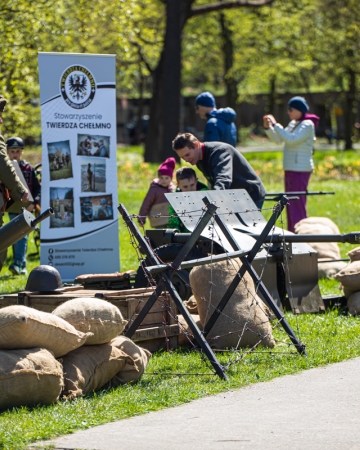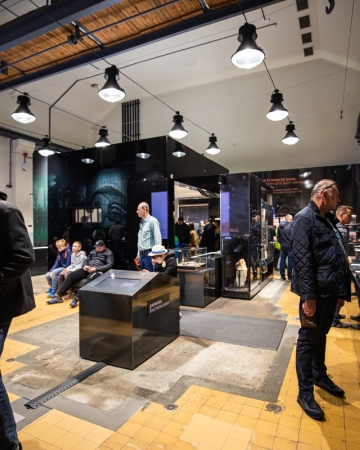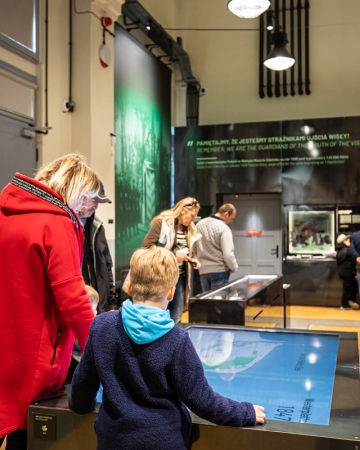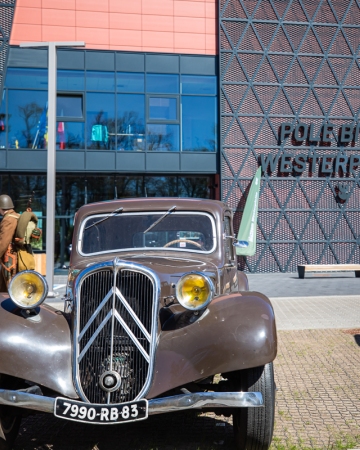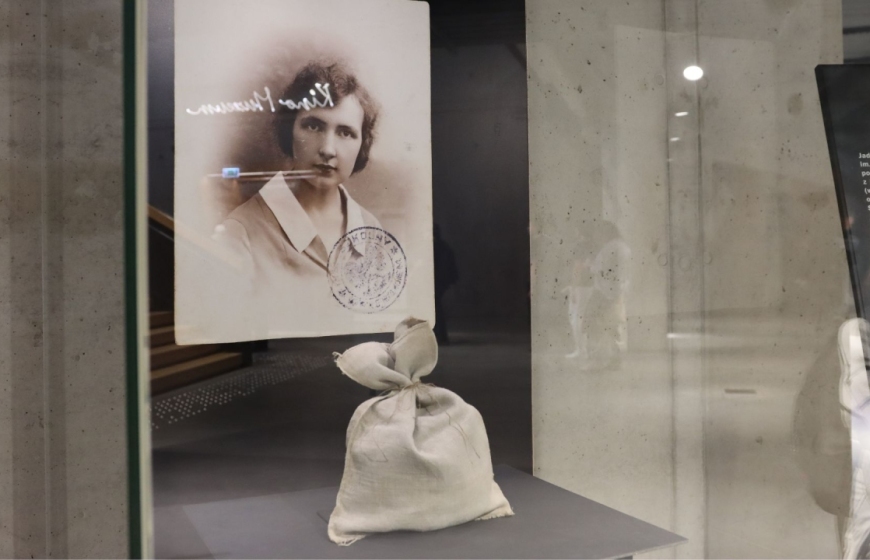VISITOR CENTRE AT WESTERPLATTE AND NEW EXHIBITION ‘Memory buried beneath the surface. Archaeology of Westerplatte’ IN THE FORMER DEPOT’S POWER PLANT OPENED!
Last weekend at Westerplatte, the Museum of the Second World War in Gdańsk opened to visitors, for the first time, two new facilities: the archaeological exhibition ‘Memory buried beneath the surface. Archaeology of Westerplatte’, located in the former depot’s power plant building, and a modern Visitor Centre.
The location of the exhibition ‘Memory buried beneath the surface. Archaeology of Westerplatte’ is not coincidental – it is the historic former power plant building of the Polish Military Transit Depot, renovated and arranged for exhibition purposes. The exhibition features archaeological discoveries related to the site and the camp for Polish civilian prisoners set up by the Germans after the fighting at Westerplatte. The curators aim to make visitors aware that Westerplatte is not only a peninsula heroically defended by a small unit of Polish soldiers, but also the site of German crimes against Polish civilians.
The exhibition also intends to highlight the symbolic significance of Westerplatte as the place where the Second World War began. It brings the history of the peninsula from the 17th century to the early 1940s, shows the everyday life of the depot and the difficult and responsible service of Polish soldiers in the face of growing hatred of the Germans towards Polish presence in the area of the Free City of Gdańsk.
In the Visitor Centre ‘Westerplatte Battlefield’ [Centrum Obsługi Zwiedzających ‘Pole Bitwy Westerplatte’], meanwhile, the Museum intends to pursue its mission through educational, cultural and popularisation activities. Author meetings, temporary exhibitions and lectures are planned. At the information desk, visitors will obtain information related to the history of Westerplatte. Assistance in planning the route, finding a guide and finding information will help discover the monuments in the area. The building overlooking the sea – and in the near future with food and drink outlets – also provides tourists with a rest stop. The building is adapted for people with disabilities.
The official opening of the facilities attended by, among others, Hanna Wróblewska, Minister of Culture and National Heritage, Minister Lech Parella, Secretary of State at the Ministry of Culture and National Heritage, and Piotr Grzelak, Deputy Mayor of the City of Gdańsk for Sustainable Development and Investment, took place on Monday, 28 April 2025. Both investments received financing from the Ministry of Culture and National Heritage.
Public opening
Even before the official opening, on 26 and 27 April 2025 Westerplatte visitors saw for the first time the Visitor Centre and the new exhibition in the power plant of the Polish Military Transit Depot.
On Saturday visitors met archaeologists and conservators, who talked about the discoveries and the work that followed. The construction of the Visitor Centre and its functions were shown as well. Adults and children also had the opportunity to participate in educational workshops. At the former power plant, archaeologists were also keen to tell visitors about the exhibition. On Sunday visitors met reconstructors throughout Westerplatte and guides along the educational trail.
During the opening weekend, nearly 900 people visited the exhibition at the power plant.
Future plans
The next step is the restoration of the Westerplatte Battlefield Monument of History, based on the government’s multi-year plan. The second phase of the project, which is scheduled to begin in the second half of 2026, will see the construction of the largest building – the main pavilion of the Westerplatte Museum, placed underground. There are also plans to rebuild several Military Transit Depot facilities on the peninsula, including the stationmaster’s building and six warehouses.
Work is also continued by the archaeologists of the Museum of the Second World War, who are constantly searching the peninsula for more artefacts and the remains of three fallen Polish soldiers, including the legionnaire Mieczysław Krzak.
